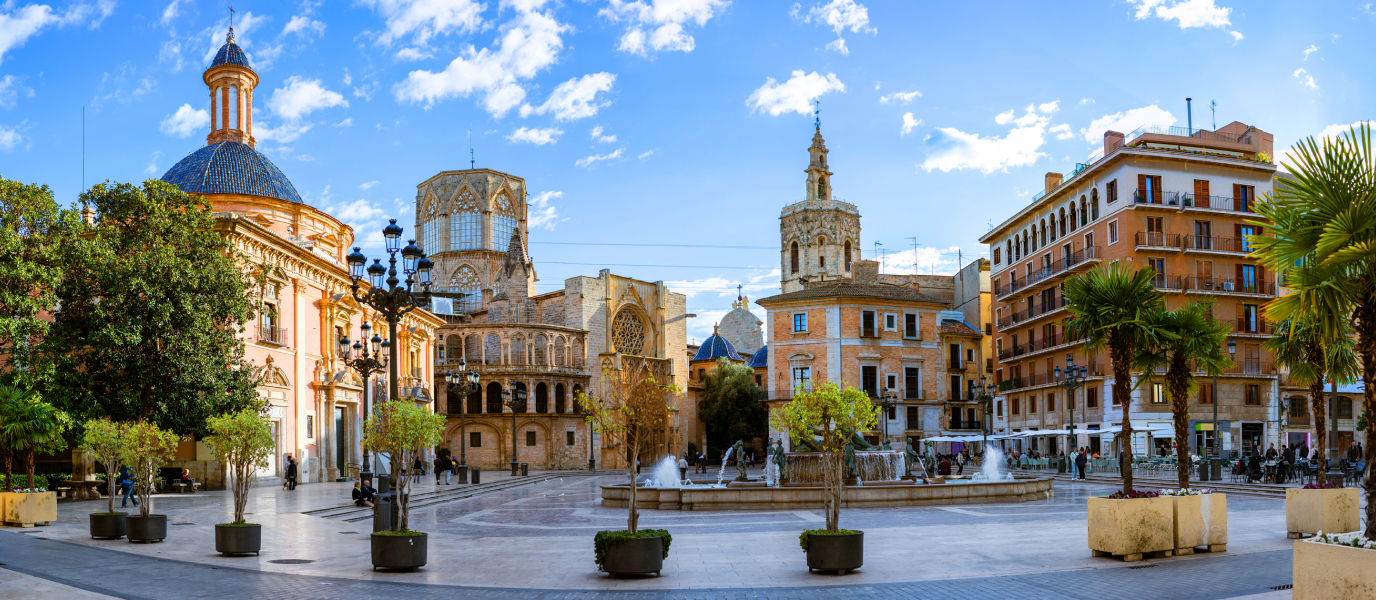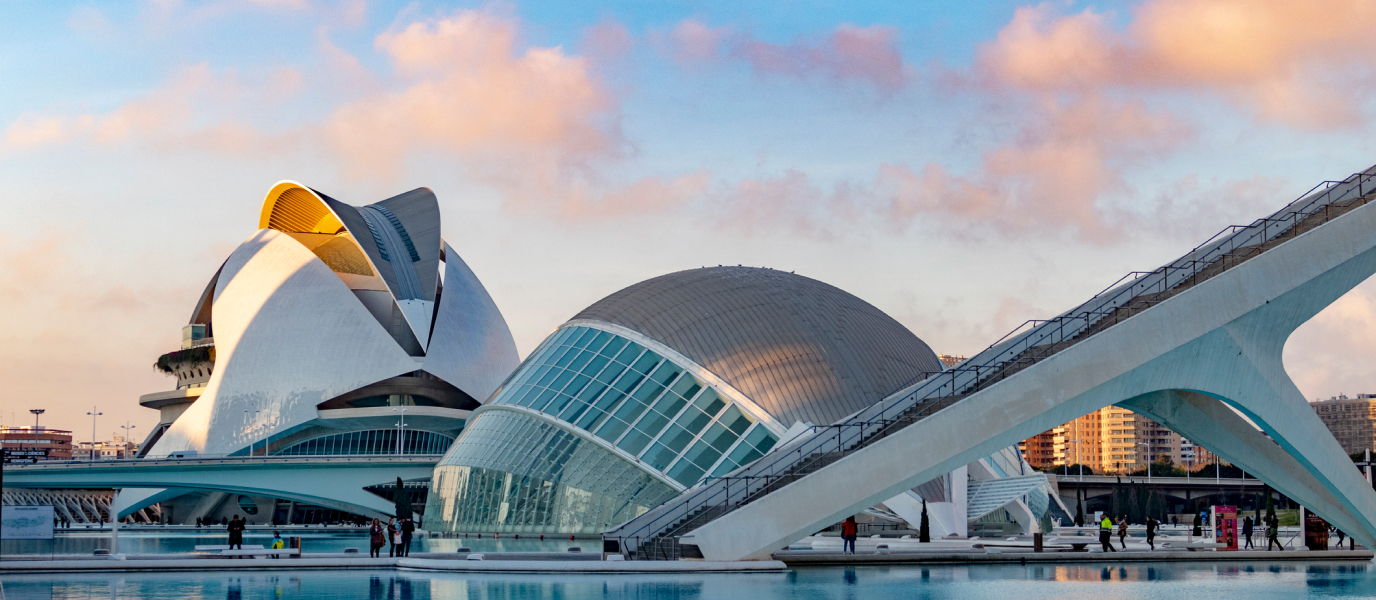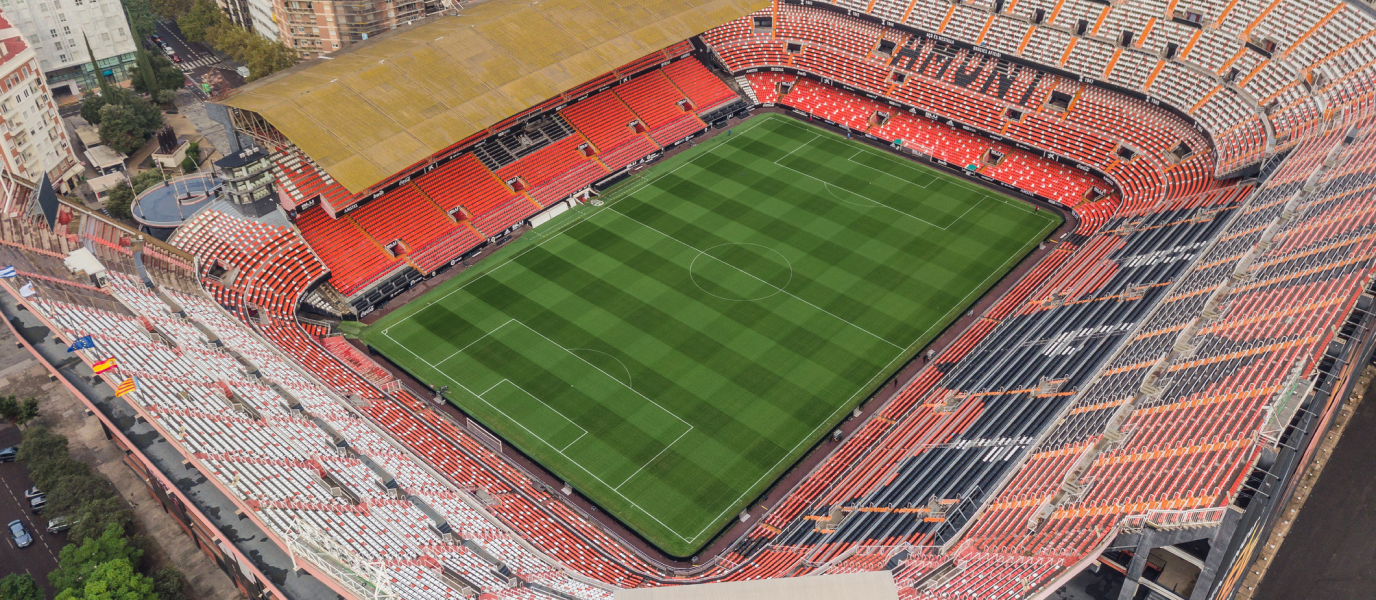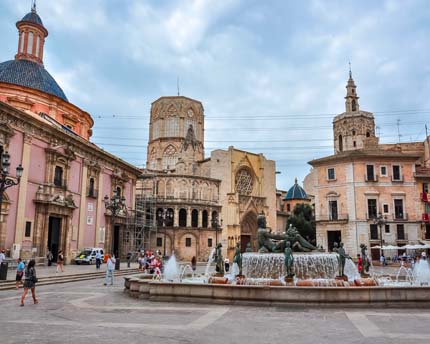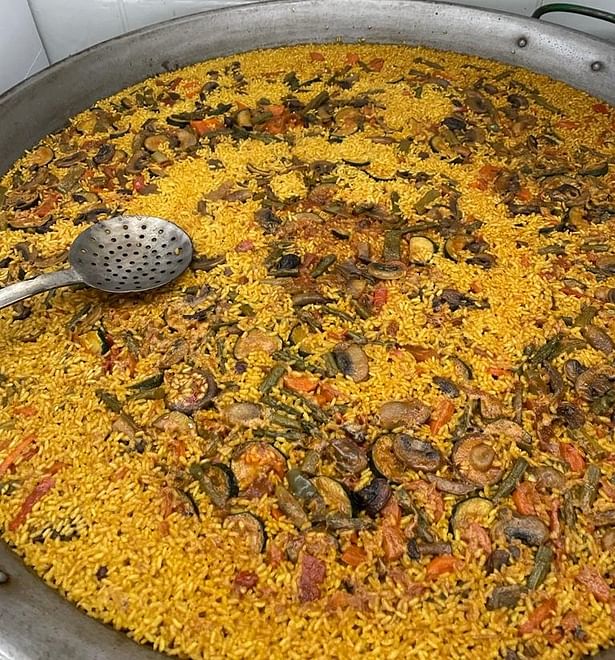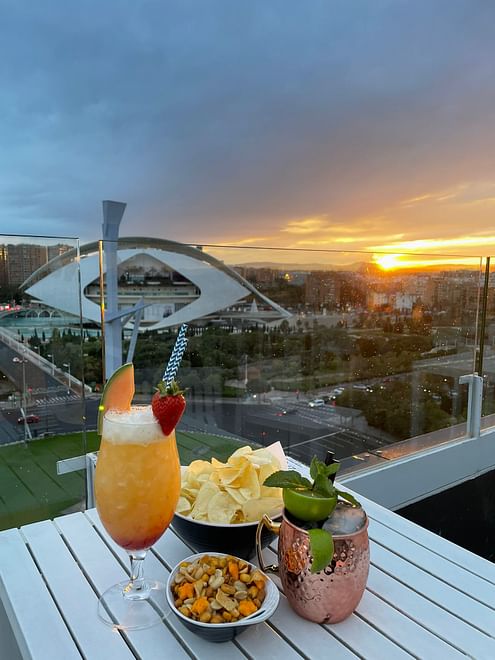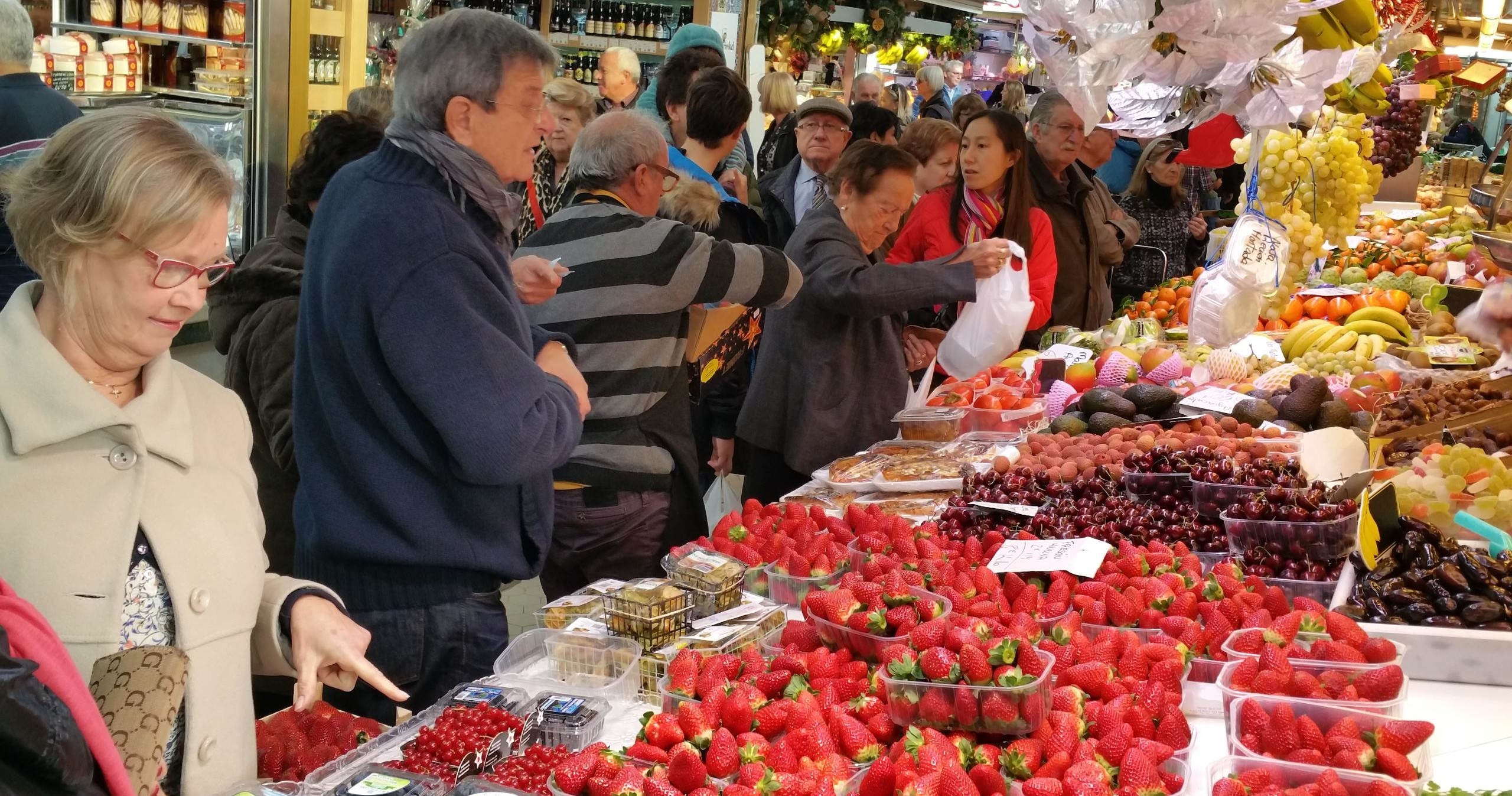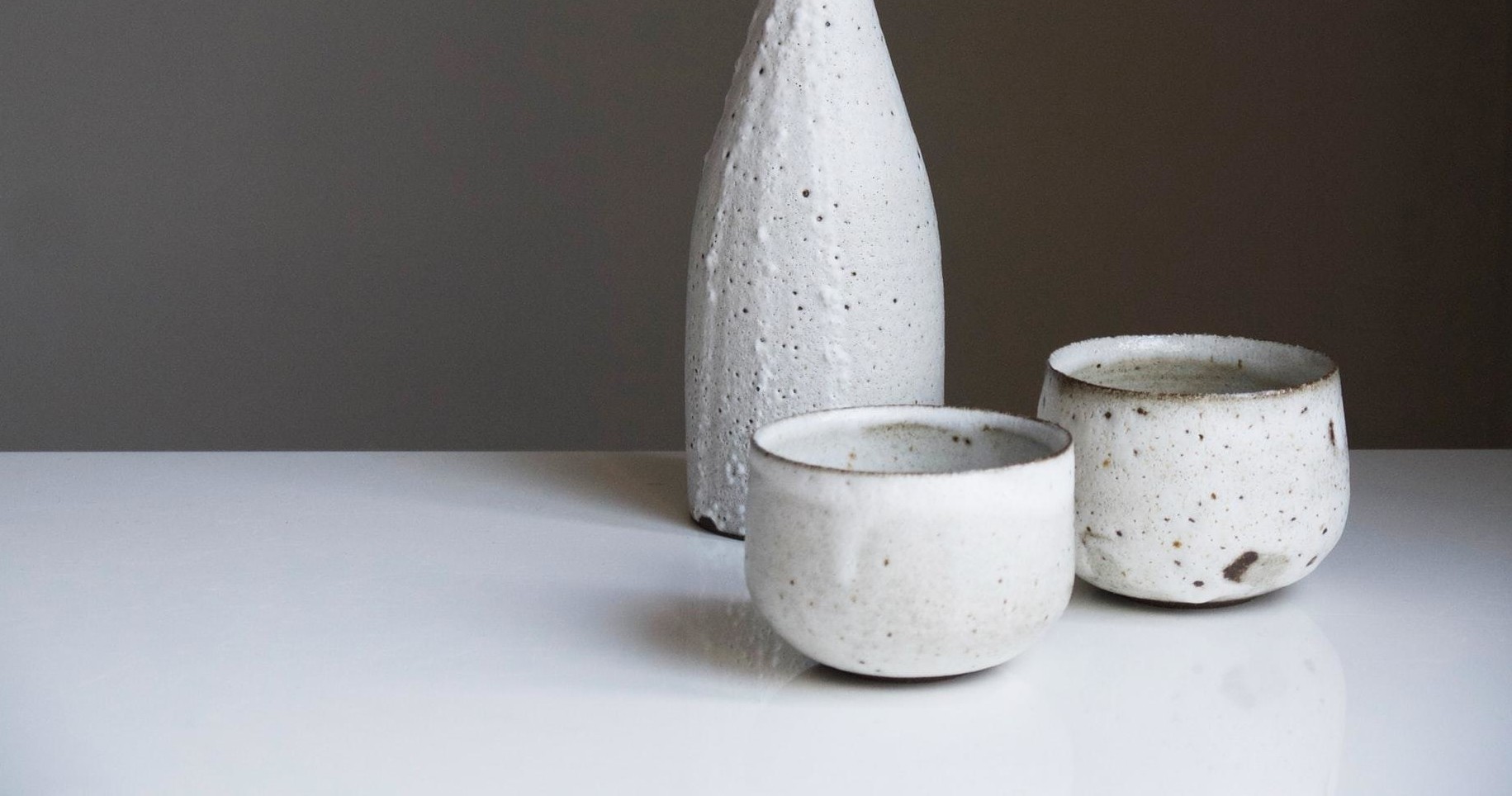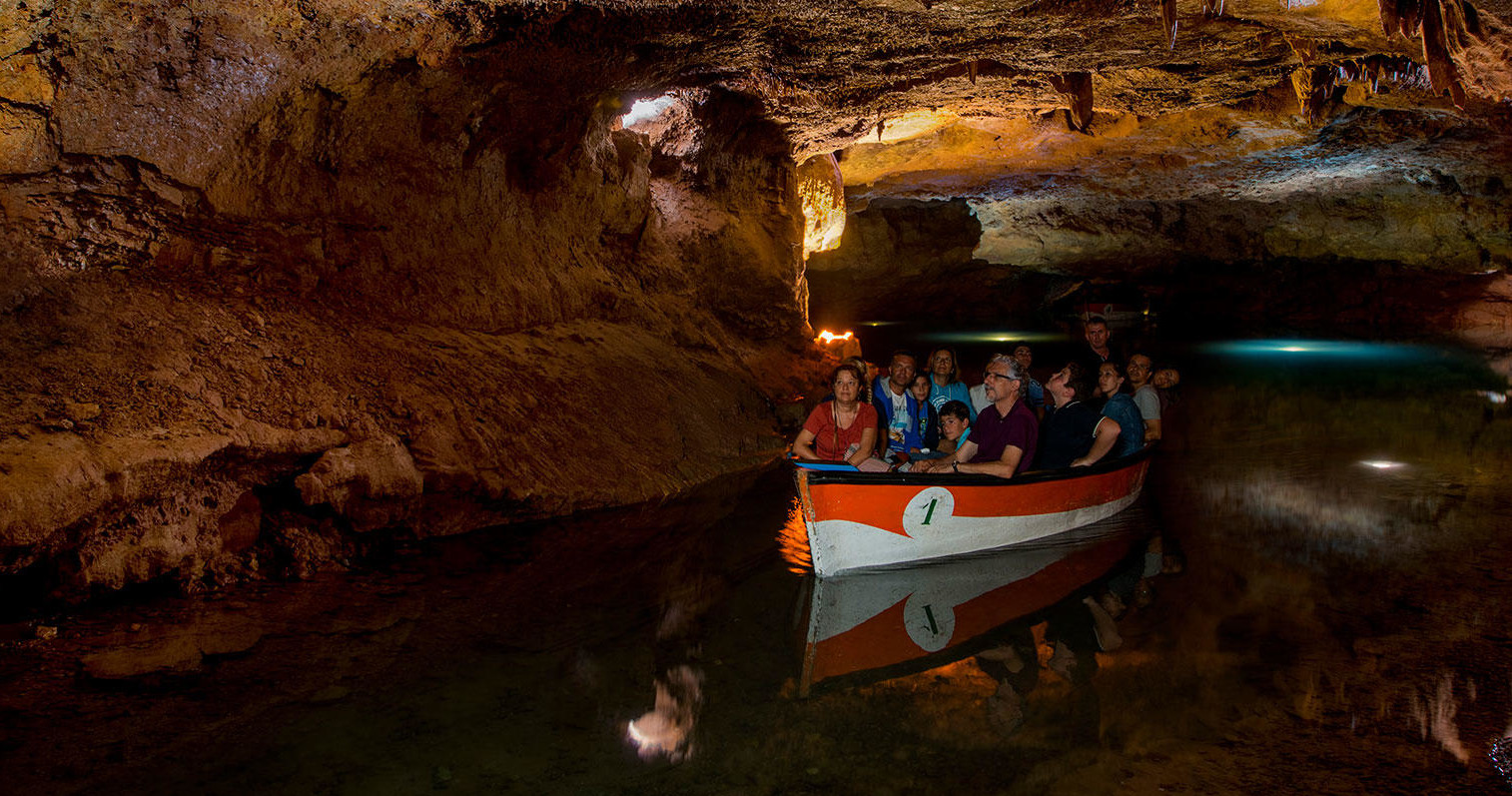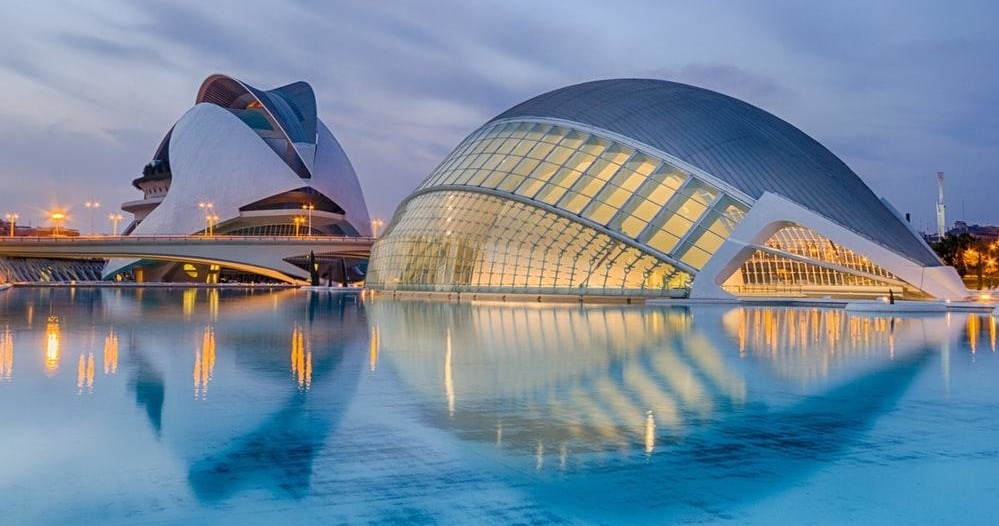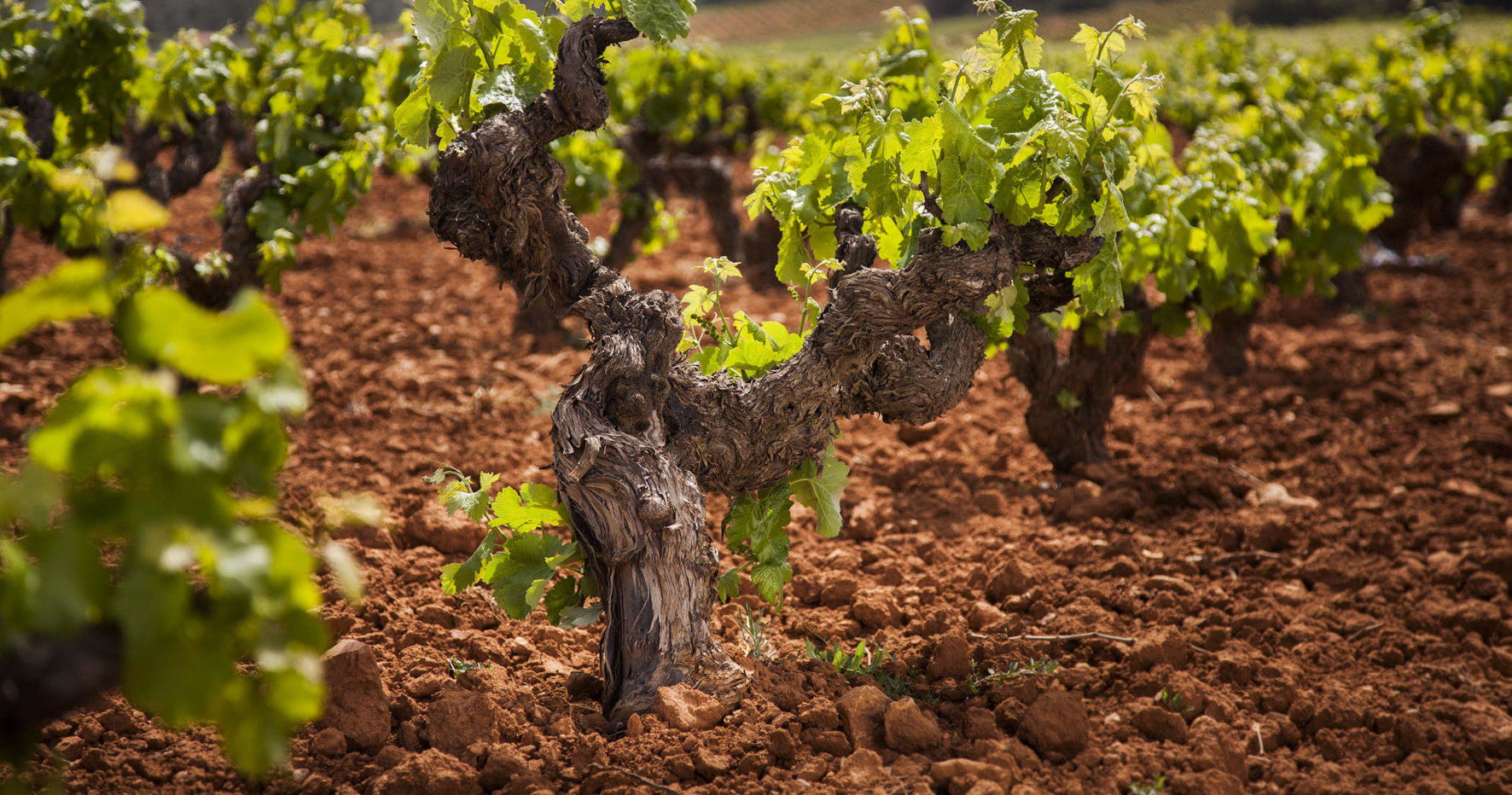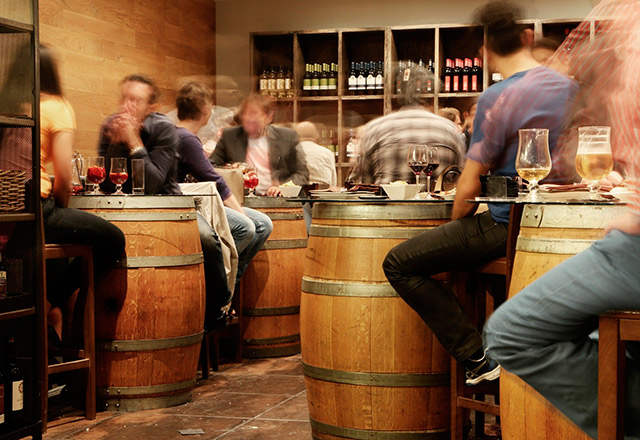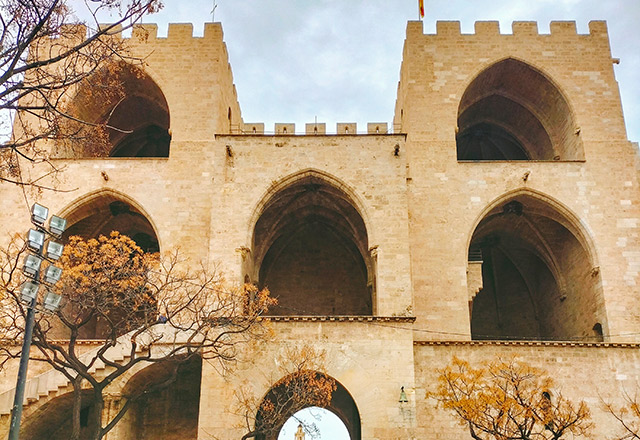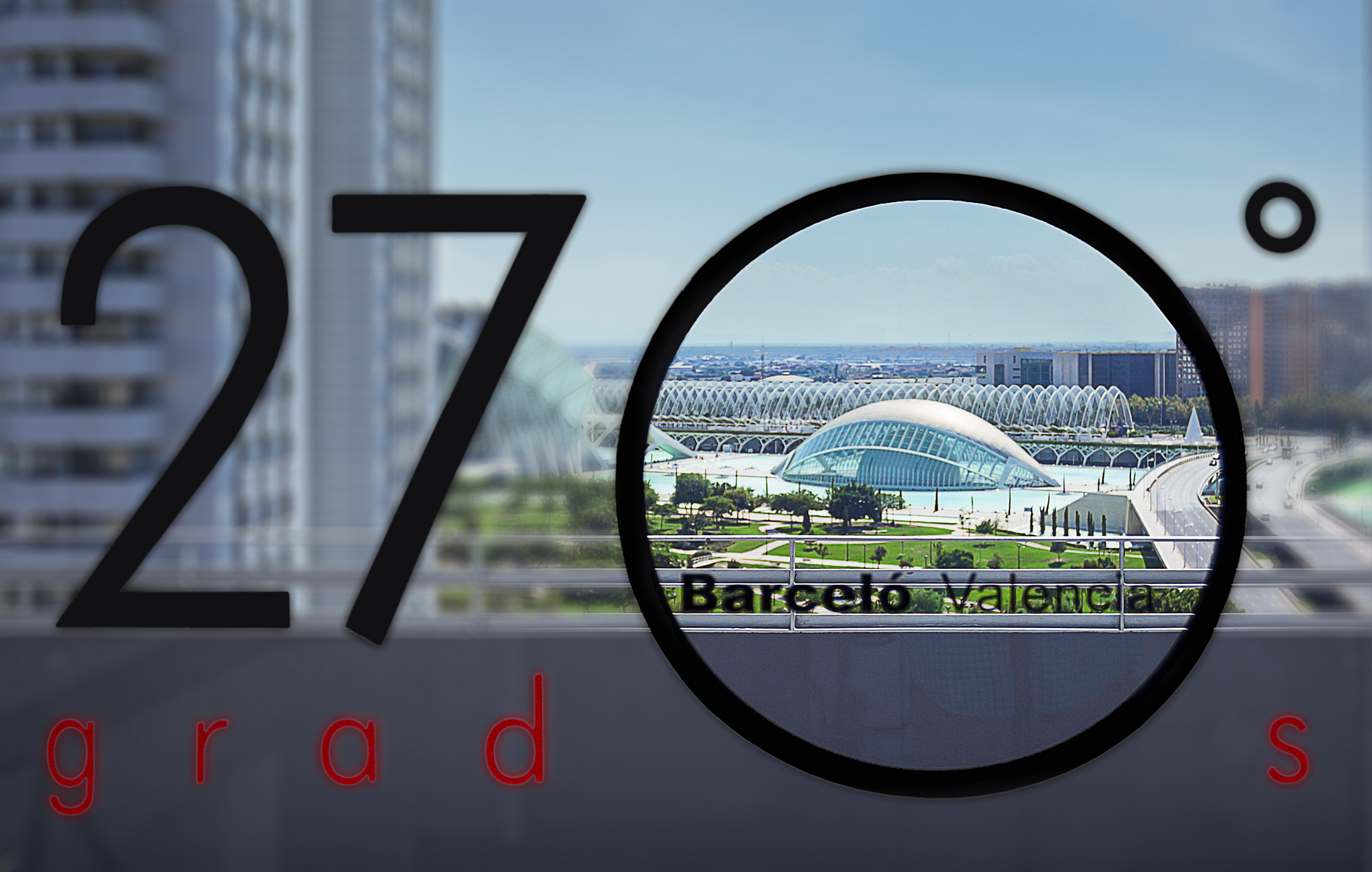Valencia’s Plaça de l’Ajuntament has an unconventional triangular shape with a central esplanade that is home to all kinds of artistic exhibitions and festivals, such as the Falles (link interno) mascletá [pyrotechnic spectacle] and the street markets held under the shade of its banana and palm trees. This is where the largest falla is erected, which is also the last one to be burnt.
Whatever the time of day or night, this square is always lively and colourful. During the daytime, it is filled with flower stalls and at night, it glitters with the lights of the fountain in its centre.
The balcony that is the focus for the start of the Falles festival
The Ajuntament [City Hall] building is crowned with two small cupolas, the work of Francisco de Mora and Carlos Carbonell during the first half of the twentieth century. With its rectangular floor plan and its Renaissance and Baroque features, the building commands an imposing presence in the square. Looking up towards its façade, the visitor will notice several statues of allegorical figures, as well as a substantial balcony. This balcony is the focus of attention of the whole city during the Falles festival, as it becomes the presidential grandstand for the mascletás. On 9 October, the senyera [Valencian flag] is lowered from the balcony without being tilted. Then, every 5 January, after their procession has taken place, the Three Wise Men climb up to this balcony using a fireman’s ladder.
The centre of the balcony features the crest of Valencia, carved in bronze and held up by two female figures (sculpted by Mariano Benlliure), representing the arts and humanities. Directly above the crest are four sculptures symbolising the four virtues: prudence, justice, fortitude and temperance. One particularly striking feature of the crest of Valencia is the bat above the royal crown—which has given rise to many legends about Jaume I’s siege of the city. One story is that a bat kept the Christian troops alert—its restless fluttering prevented them from sleeping, and so they avoided surprise attacks from the Moors. Historians, however, have a different explanation for the presence of the bat on the crest, as the bat did not actually appear until the sixteenth century. It is, in fact, a variation on the symbol of a dragon which was added by King Pedro IV of Aragon and II of Valencia. This monarch used the winged dragon because of the similarity between the word ‘dragón’ and ‘d’Aragón’.
The City Hall’s façade is set off by a clock that chimes the quarter hour from eight in the morning until midnight. At midday, it plays the chords of the Valencia region’s hymn, a work by the composer Serrano. The whole Ajuntament complex covers an area of 6,000 m2, and includes the eighteenth-century Real Casa de la Enseñanza. At either end of the façade stands a large turret covered in glazed tiles.
The building’s interior is well worth a visit. At the entrance, visitors are confronted by a monumental Neo-classical marble staircase. Upstairs are to be found the building’s most important rooms. On one side is the Salón de Cristal, where official ceremonies are held. The room’s outstanding features are its beautiful lamps and myriad mirrors. On the other side is the Classical-styled chamber where the plenary council meetings take place.
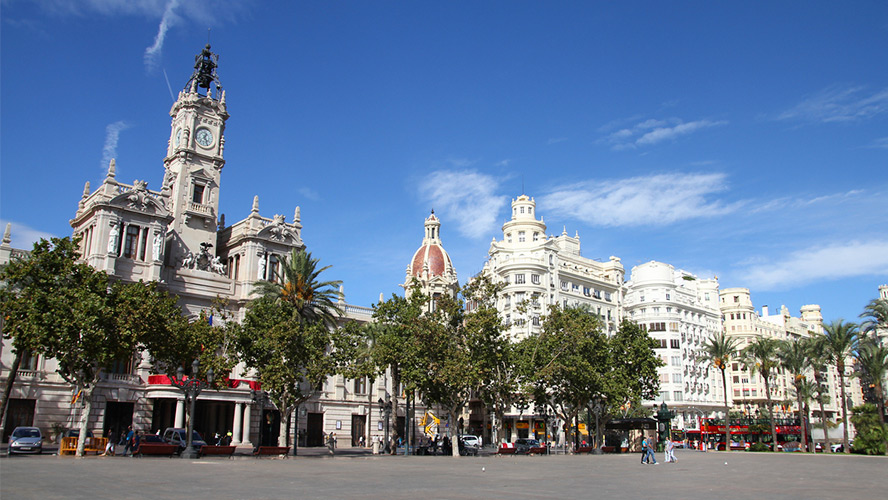
In addition, the building’s top floor houses the city’s History Museum. Exhibits include emblems of the city such as the original senyera; the sword with which Jaume I conquered Valencia; the Reconquest banner, the symbol of the recapture of the city from the Moors; and the city plan created in 1704 by Father Tosca. The museum contains valuable works of art, such as a fifteenth-century Flemish panel portraying the Final Judgement, as well as paintings by Serinyena and Sorolla. Visitors can see original medieval manuscripts and incunables, including Nebrija’s Gramática.
Other noteworthy features are the interior courtyard of the Casa de la Enseñanza, the façade overlooking Calle de la Sangre, and the rear façade with its series of windows with iron grilles which belongs to the convent. The Tourist Information desk can be found within the main façade of the City Hall.
Correos y Telégrafos
On the same square, opposite the City Hall, stands the Correos y Telégrafos [Central Post Office] building—designed in 1915 by the architect Miguel Ángel Navarro in the Classical Academicist style. Of particular note is the great iron and glass cupola above the main hall, the lower part of which is decorated with the crests of all the provinces of Spain. The main room has an enormous stained-glass ceiling consisting of 370 panels and 3,500 individual pieces of glass. The building’s entrance is embellished with references to communication by land and sea, and an allegorical portrayal of the five continents traversed by angels as the fastest messengers.
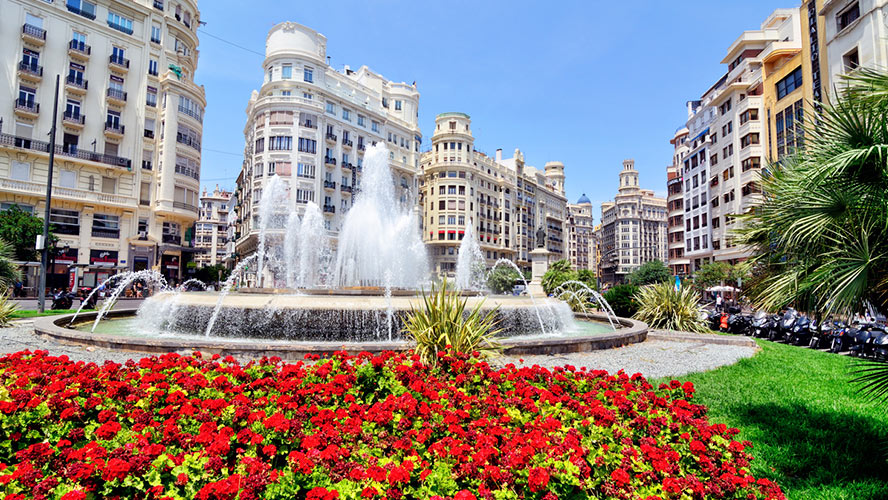
Ateneo Mercantil
Slightly beyond the Central Post Office is the Ateneo Mercantil, a building designed for an association of merchants by the architects Cayetano Borso di Carminati and Emilio Artal during the 1940s (although the association itself has actually been in existence since 1879).
Teatro Rialto
On the corner of the square stands the Teatro Rialto, headquarters of the Filmoteca Valenciana [Valencia Film Library] and the Teatres de la Generalitat Valenciana. Another work by Borso di Carminati, the Teatro Rialto was built on the site of a former cinema; it tends towards Art Deco in its use of iron and glass and towards Rationalism in its design.



























































